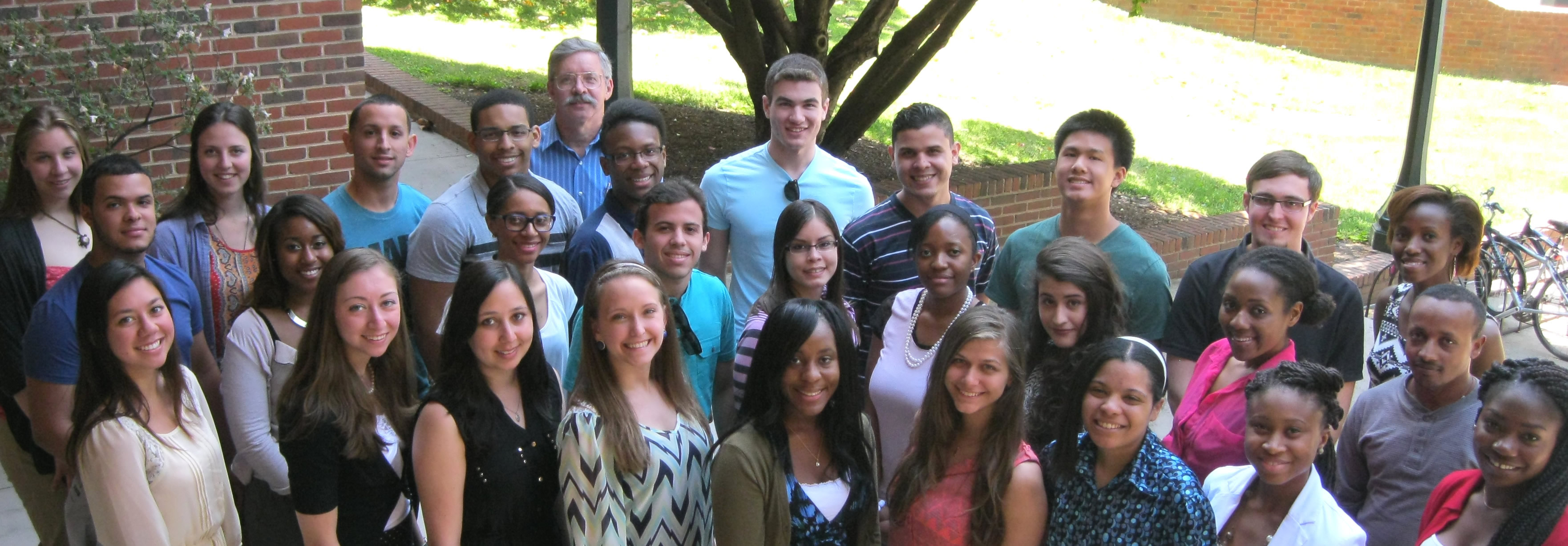This weekend, 30 students who called the Bice House their home this summer packed their suitcases, loaded their cars and prepared to head home. Selected from a pool of 715 applicants from across the country, they had just wrapped up their work at the University of Virginia School of Medicine’s Summer Research Internship Program. Abbreviated “SRIP,” the program has been recognized by the National Institutes of Health as one of the best undergraduate biomedical research programs in the country – and for many, it’s a defining point in determining their career in the sciences.
Back when the program started in 1992, program director Joel Hockensmith and coordinator Jeff Baker had just enough funding to offer four students an internship with a medical school faculty member. Now, due to the program’s huge success, they’re able to accept more than two dozen students into labs at U.Va. to conduct supervised research based on their interests.
The program has three components: the faculty mentorship, a series of workshops based in different facets of biomedical research and a lecture series in which students hear from internationally recognized scientists. They learn from professionals in cardiology, genome mapping, neuroscience and more, receive free GRE tutoring and hear from graduate students who walked in their shoes only a couple years earlier.
“We’re trying to help students see diverse perspectives,” said Hockensmith, an associate professor of biochemistry and molecular genetics. “All the students are smart, but they don’t all have the same passions, so we read the apps to figure out who has passion. Some of them don’t know for sure what they want to do, but if we can get them here and inflame their passion, it’s fantastic.”
After more than two decades, 33 percent of SRIP graduates have gone on to seek their Ph.D., while 32 percent will pursue their M.D. The rest have used their medical knowledge in other fields like law or public service. In all, more than 80 percent go on to graduate study – weighty numbers compared to similar summer programs.
“Peer review says if you stack up the dozen universities that send applications to the National Institutes of Health to get their grants funded, U.Va.’s outcomes push them to the top,” Hockensmith said.
“SRIP provided me an opportunity to decide that a career in science was the right choice for me,” said Awndre Gamache, who was accepted into the program in 2010 from Washington State University and subsequently was accepted into U.Va.’s microbiology, immunology and cancer biology program to pursue his Ph.D. “"Even if I made an alternate career choice, I still would have considered the program a huge success because it offers an accurate representation of careers in science.”
The program targets, but is not limited to, racial and ethnic minority students in their junior and senior years. While many colleges have diversity programs, word quickly grew about the U.Va.’s program because of the relative success of its students. “I used to have to call up [historically black] colleges like Hampton [University] and pitch the program, but now it’s the other way around,” Hockensmith said.
For Crystal Richardson, a former SRIP intern now pursuing her Ph.D. in the U.Va. Medical School’s cell biology department, the program exposed her to what graduate research was all about.
“Since I went to a small liberal arts college, it was very exciting to have the new experience of working in a much larger research university,” she said. “There were no graduate programs at my undergrad, so SRIP allowed me to meet and work with graduate students. This helped me to understand what graduate students do when working toward a PhD, which is hypothesis-driven research.”
Fifty-one alumni have a Ph.D., and 10 are currently professors. More than 200 have published professional papers, some stemming directly from their SRIP research, yielding a total of more than 750 peer-reviewed publications.
“What we find is if students make a good decision and bring passion, they’re much more productive in their research and in their careers,” Hockensmith said. “That is very important to us – we have a vested interest in making sure our students succeed, so we work very hard to give them the tools.”
Media Contact
Article Information
August 5, 2014
/content/23-years-strong-uva-s-srip-helps-undergrad-biomedical-students-focus-future

